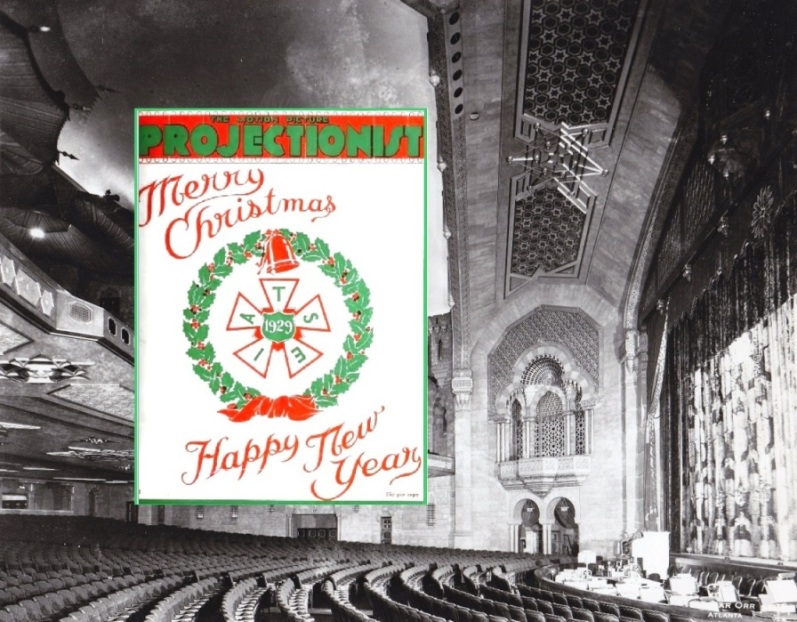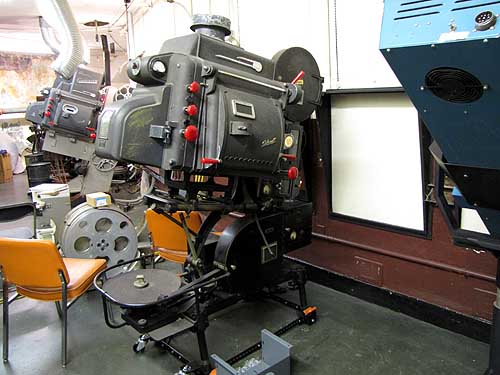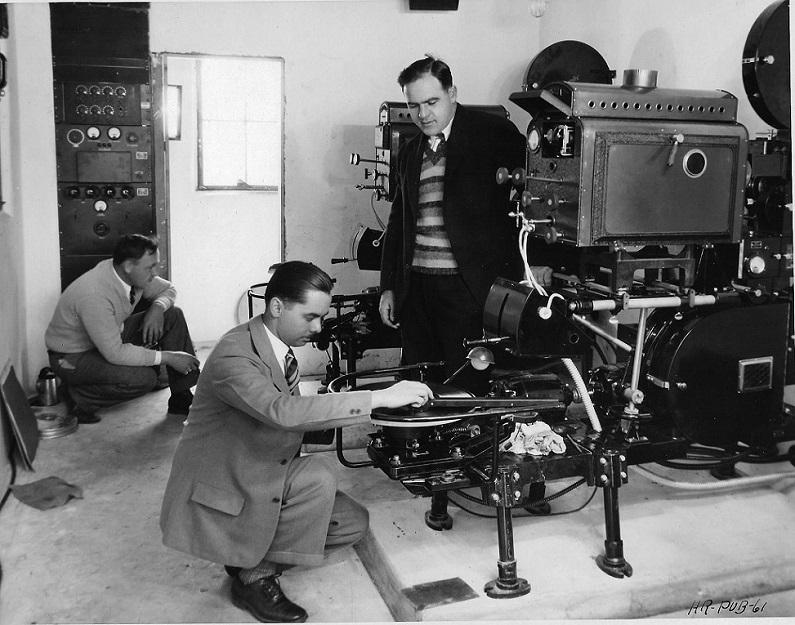|
|
This topic comprises 3 pages: 1 2 3
|
|
Author
|
Topic: TALKING PICTURE PROJECTION
|
|
|
|
|
|
|
|
|
|
|
Leo Enticknap
Film God

Posts: 7474
From: Loma Linda, CA
Registered: Jul 2000
|
 posted 02-11-2015 05:15 PM
posted 02-11-2015 05:15 PM





quote: Mark Gulbrandsen
Apparently Mr. Kelly didn't forsee Grandeur, Magnascope or Todd-AO... but what the hey. $75,000.00 in those days? 70 K went to Western Electric and the rest went into projectors and lamps. Western Electric stuff was extremely expensive in those days... Makes the cost of Digital look pale by comparison.
But it shows that the same thing was happening with the conversion to sound as is happening with the conversion to digital, basically: the technology vendors are recouping their R & D investment by charging huge mark-ups on the hardware.
To be fair, the equipment in that booth would probably have been good for the next 20-25 years. Grandeur and Magnascope were very short lived. There may have been minor upgrades to the audio needed to accommodate push-pull and RCA duplex optical tracks, but basically they were all set until widescreen.
In relation to the Vitaphone stuff, I've often thought that it would be fun actually to try to recreate a sound-on-disc show, but it would be pretty difficult and expensive. You'd need to master new discs, which would either mean making new lacquer-master-stamper-playback discs from preservation masters of the audio, or accepting slight inauthenticity and using direct-cut acetates (though would an acetate withstand the very high tracking force of an authentic Vitaphone turntable and arm?). You'd also need a print of the movie with the reel lengths in the original release configuration to match the discs, which most prints deriving from archival restorations aren't.
Still, if any pair of projectors with turntables and preamps in working condition survives anywhere, it would still be fun to do. And it would be interesting, to check out the frequently made claims in the late '20s that sound-on-disc offered clearly superior playback sound quality, so much so that as a playback-in-the-theater system, it survived well into the mid-30s.
| IP: Logged
|
|
|
|
Leo Enticknap
Film God

Posts: 7474
From: Loma Linda, CA
Registered: Jul 2000
|
 posted 02-12-2015 08:58 AM
posted 02-12-2015 08:58 AM





quote: Mark Gulbrandsen
Sound was comparative way more expensive than digital to install.
Per auditorium, yes. But in 1929, your average suburban theater consisted of a single auditorium containing anywhere between 500 and 3,000 seats. Today, it's a 12-plex with between 150-300 seats in each house.
So if an individual theater location cost around a million (in today's money, adjusted for inflation) to equip for sound in the late 20s/early 30s, I'm guessing that's around the same as the cost for a comparable location for convert from 35mm to digital in the late 00/early teens.
Furthermore, the 1929 theater would almost instantly start to make significant operational savings, because it would no longer need the services of several musicians.
A detailed comparison study of the economics of the two conversions would make for a very interesting read (for me, at any rate!).
| IP: Logged
|
|
|
|
|
|
|
|
Leo Enticknap
Film God

Posts: 7474
From: Loma Linda, CA
Registered: Jul 2000
|
 posted 02-14-2015 11:35 AM
posted 02-14-2015 11:35 AM





Note the concrete slab on which the projector chassis sits in Steve's pic - I'm guessing to absorb vibration and prevent the tonearm from jumping, causing loss of sync. The slabs must have added a ton or two to the floor loading requirement of the booth. If that was normal for SOD installations, no wonder it was a short-lived technology.
Mitchell - even with only one projector and turntable, I guess you could still put on a program of Vitaphone musical shorts. You'd have to be quick on the rethreading and recueing not to make the audience bored, though!
If it were me I'd be cagey about playing original, surviving release discs, because of their soft shellac/filler compound and the huge tracking forces of those arms (hence the reason the discs were only designed to withstand 20 playings before serious groove wear degraded the audio). Even if the content has already been digitized, there is always the possibility that better remastering could be done in the future, which you're giving up if you damage or destroy the disc in the meantime. I suppose if dozens of copies of a given side survive, there wouldn't be much risk in using the worst one, though.
For real authenticity, we'd have to wear three-piece suits while working the booth, too! And smoke, probably...
| IP: Logged
|
|
|
|
|
|
|
|
|
|
All times are Central (GMT -6:00)
|
This topic comprises 3 pages: 1 2 3
|
Powered by Infopop Corporation
UBB.classicTM
6.3.1.2
The Film-Tech Forums are designed for various members related to the cinema industry to express their opinions, viewpoints and testimonials on various products, services and events based upon speculation, personal knowledge and factual information through use, therefore all views represented here allow no liability upon the publishers of this web site and the owners of said views assume no liability for any ill will resulting from these postings. The posts made here are for educational as well as entertainment purposes and as such anyone viewing this portion of the website must accept these views as statements of the author of that opinion
and agrees to release the authors from any and all liability.
|

 Home
Home
 Products
Products
 Store
Store
 Forum
Forum
 Warehouse
Warehouse
 Contact Us
Contact Us




 Printer-friendly view of this topic
Printer-friendly view of this topic






![[thumbsup]](graemlins/thumbsup.gif)










